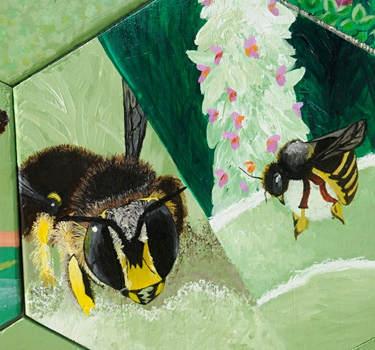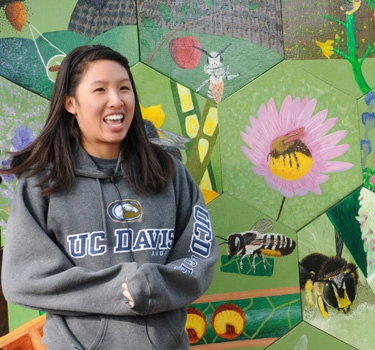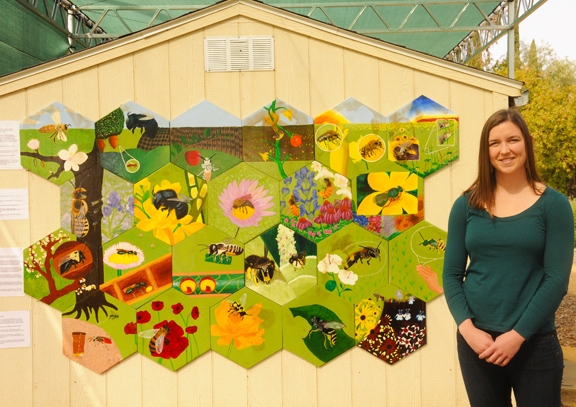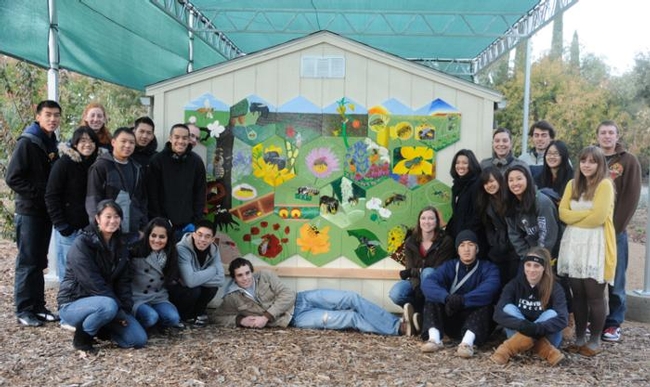

The panels feature mostly native bees.
The project dates back to 2011 when 22 UC Davis students enrolled in an Entomology 1 class, "Art, Science and the World of Insects," taught by entomologist-artist Diane Ullman, professor of entomology at UC Davis and self-described "rock artist" Donna Billick of Davis.
The half-acre bee garden, located on Bee Biology Road, next to the Harry H. Laidlaw Jr. Honey Bee Research Facility on Bee Biology Road is open from sunrise to sunset for self-guided tours. No admission is charged. The latest news: The Haven will now be staffed every Friday morning from 10 to noon. You can not only see pollinators foraging on the plants, but view all the art, including Billick's six-foot-long mosaic/ceramic sculpture, "Miss Bee Haven," that anchors the garden. On Fridays, you can also see the bee display case, sign up for a "catch and release" bee vacuum, and buy bee guides and plants, according to the academic management officer Christine Casey.
But back to the bee mural. Then doctoral student Sarah Dalrymple of the Rick Karban lab, served as the graphics project coordinator and teaching assistant, guiding the students on design, creation and installation of the panels. She went on to be named the 2011 recipient of the UC Davis Outstanding Graduate Student Teaching Award and praised for fusing the boundaries of biology, art and culture.
The 22 students portrayed 22 bees, including such natives as mason, sweat, squash, leafcutter, blue orchard, carpenter and bumble bees. Notice that the honey bee is not listed? That's because it's not a native. European colonists brought it to America in 1622, and it wasn't introduced to California until 1853.
Another non-native is the European wool carder bee, first detected in the United States (New York) in 1963, and in California (Sunnyvale) in 2007. The carder bee is so named because the female "cards" fuzz from plants for her nest.
The students celebrated their work and talked about their projects at an end-of-the-year gathering in 2011.
And now visitors to the garden can celebrate--and appreciate--all the dedication, ingenuity and creativity that went into this mural.
(Editor's Note: Who are the students and what species did they study and design? They're all listed on this website, as well as the identification of the students in the group photo below. The configuration of this blog does not allow a long caption.)
Attached Images:

